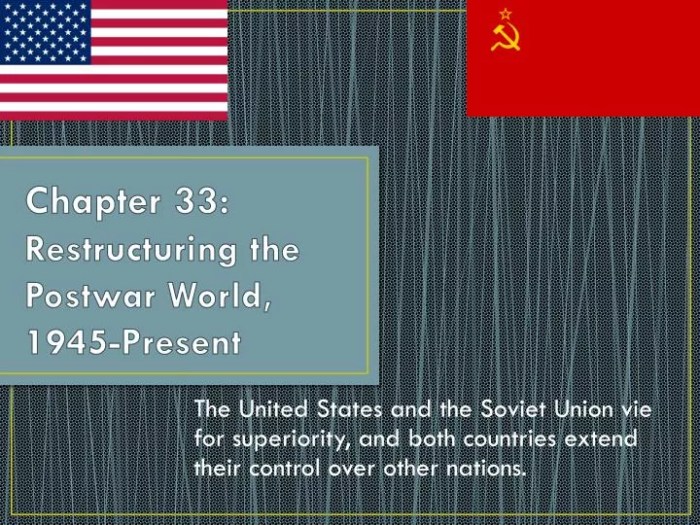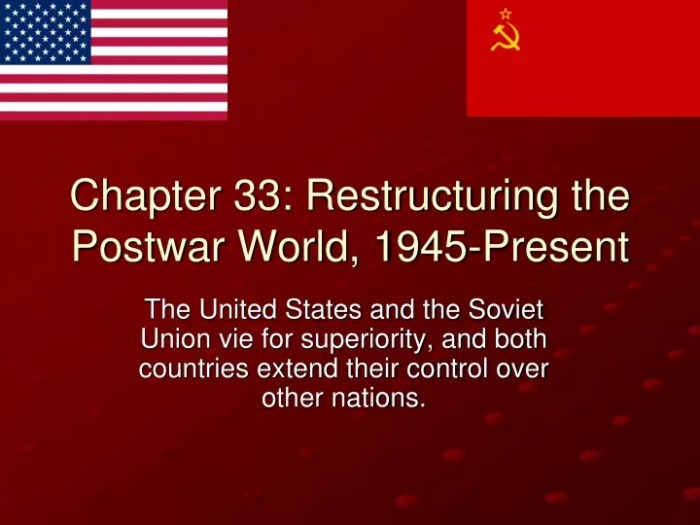Chapter 33 restructuring the postwar world – Chapter 33: Restructuring the Postwar World embarks on an illuminating journey into the transformative era following World War II, a period characterized by profound global restructuring and the emergence of a new world order.
This chapter delves into the complexities of rebuilding shattered nations, establishing international institutions, fostering economic recovery, and navigating the geopolitical tensions of the Cold War. It sheds light on the decolonization process, technological advancements, and the profound cultural and social changes that shaped this pivotal era.
Post-World War II Restructuring: Key Objectives: Chapter 33 Restructuring The Postwar World

The restructuring of the postwar world was driven by a set of primary goals and aspirations that sought to address the devastation and chaos caused by the war. These objectives included establishing international cooperation, promoting economic recovery, and preventing future conflicts.
The motivations behind these objectives stemmed from the recognition of the need for a stable and peaceful world order. The horrors of the war had convinced leaders and policymakers that the pre-war system had failed and that a new approach was necessary to avoid a repeat of such catastrophic events.
Global Institutions and Organizations

The establishment of global institutions and organizations was a central feature of the postwar restructuring. These organizations were designed to facilitate international cooperation and promote peace, security, and economic development.
United Nations
- Established in 1945, the United Nations is the primary international organization for maintaining peace and security.
- Its charter sets out its principles and purposes, including preventing war, promoting human rights, and fostering economic and social development.
International Monetary Fund (IMF)
- Established in 1944, the IMF is an international financial institution that promotes global monetary cooperation and financial stability.
- Its primary role is to provide financial assistance to member countries experiencing balance of payments difficulties.
World Bank, Chapter 33 restructuring the postwar world
- Established in 1944, the World Bank is an international financial institution that provides loans and grants to developing countries for economic development projects.
- Its mission is to reduce poverty and promote sustainable economic growth.
Quick FAQs
What were the primary objectives of the postwar restructuring efforts?
The primary objectives included promoting economic recovery, fostering international cooperation, and preventing future conflicts.
How did the establishment of international institutions contribute to the postwar restructuring?
International institutions such as the United Nations and the World Bank played crucial roles in facilitating economic recovery, promoting cooperation, and addressing global challenges.
What were the key challenges faced by nations in the aftermath of the war?
Nations faced challenges such as economic devastation, political instability, and the need to rebuild infrastructure and social systems.

